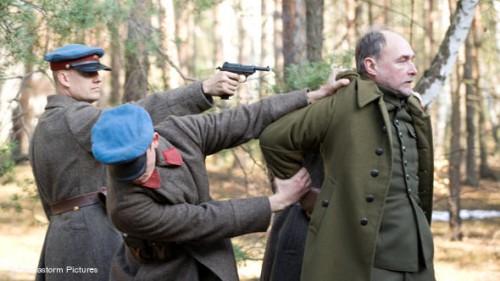English original here [2]
 Il y a maintenant plusieurs années de cela, un ancien officier du renseignement militaire soviétique nommé Vladimir Rezun provoqua de vives discussions en Russie à cause de son affirmation sensationnelle, selon laquelle Hitler a attaqué la Russie soviétique en juin 1941, au moment exact où Staline se préparait à submerger l’Allemagne et l’Europe de l’Ouest, en prélude à une opération bien préparée, visant à «libérer» toute l’Europe en la mettant sous domination communiste.
Il y a maintenant plusieurs années de cela, un ancien officier du renseignement militaire soviétique nommé Vladimir Rezun provoqua de vives discussions en Russie à cause de son affirmation sensationnelle, selon laquelle Hitler a attaqué la Russie soviétique en juin 1941, au moment exact où Staline se préparait à submerger l’Allemagne et l’Europe de l’Ouest, en prélude à une opération bien préparée, visant à «libérer» toute l’Europe en la mettant sous domination communiste.
Ecrivant sous le nom de plume de Viktor Suvorov, Rezun a développé cette thèse dans trois livres. Le Brise-glace (qui a été traduit en anglais et en français [1989] ) et Dni M («M-Day») ont été présentés dans le Journal of Historical Review, nov-déc. 1997. Le troisième livre, présenté ici, est un ouvrage de 470 pages, «La dernière république : pourquoi l’Union Soviétique perdit la Seconde Guerre Mondiale», publié à Moscou en 1996.
Suvorov présente une abondance de preuves, montrant que quand Hitler déclencha son «Opération Barbarossa» contre la Russie Soviétique le 22 juin 1941, les forces allemandes purent infliger d’énormes pertes aux Soviétiques précisément parce que les troupes russes étaient très bien préparées pour la guerre — mais pour une guerre d’agression qui fut programmée pour le début de juillet — et pas pour la guerre défensive qui leur fut imposée par l’attaque préventive de Hitler.
Dans le Brise-glace, Suvorov détaille le déploiement des forces soviétiques en juin 1941, décrivant exactement de quelle manière Staline amassa de vastes quantités de troupes et de stocks d’armements le long de la frontière européenne, pas pour défendre la patrie soviétique, mais en préparation d’une attaque vers l’ouest et de batailles décisives en territoire ennemi.
Ainsi, quand les forces allemandes frappèrent, le gros des forces russes, terrestres et aériennes, étaient concentrées le long des frontières ouest de l’URSS, en face des pays européens contigus, particulièrement le Reich allemand et la Roumanie, prêtes pour l’assaut final contre l’Europe.
Dans son second livre sur les origines de la guerre, M-Day («Jour de mobilisation»), Suvorov décrit comment, entre la fin de 1939 et l’été de 1941, Staline construisit méthodiquement et systématiquement la force militaire la mieux armée, la plus puissante dans le monde — véritablement la première superpuissance du monde — pour sa future conquête de l’Europe. Suvorov explique comment la conversion drastique de l’économie du pays pour la guerre, voulue par Staline, rendait la guerre réellement inévitable.
Une Union Soviétique Mondiale
Dans La dernière république, Suvorov ajoute d’autres preuves à celles présentées dans ses deux livres précédents, pour appuyer son affirmation selon laquelle Staline se préparait à une guerre d’agression, en soulignant les motivations idéologiques des actions du dirigeant soviétique. Le titre fait allusion au malheureux pays qui devait être incorporé en tant que «République finale» dans «l’Union des Républiques Socialistes Soviétiques» mondiale, complétant ainsi le révolution prolétarienne mondiale.
Comme l’explique Suvorov, ce plan était entièrement en accord avec la doctrine marxiste-léniniste, ainsi qu’avec la politique de Lénine dans les premières années du régime soviétique. L’historien russe argue de manière convaincante que ce ne fut pas Léon Trotsky (Bronstein), mais plutôt Staline, son moins flamboyant rival, qui fut réellement le fidèle disciple de Lénine pour la poursuite de la Révolution Communiste Mondiale. Trotsky insistait sur la doctrine de la «révolution permanente», par laquelle le jeune Etat soviétique aiderait à fomenter des soulèvements et des révolutions ouvrières à l’intérieur des pays capitalistes.
A la place de cela, Staline voulait que le régime soviétique tire avantage «d’armistices» occasionnels dans la lutte mondiale pour consolider la force militaire soviétique, afin qu’au bon moment des forces soviétiques plus importantes et mieux armées puissent frapper en Europe du Centre et de l’Ouest, ajoutant de nouvelles républiques soviétiques quand cette force écrasante se mettrait en marche à travers le continent. Après la consolidation réussie et la soviétisation de toute l’Europe, l’URSS renforcée serait prête à imposer le pouvoir soviétique à tout le globe.
Comme le montre Suvorov, Staline comprit très bien que s’ils avaient le choix, les peuples des pays avancés de l’Occident ne choisiraient jamais volontairement le communisme. Il serait donc nécessaire de l’imposer par la force. Staline décida alors que son plan audacieux ne pouvait être réalisé que par une guerre mondiale.
Une preuve d’importance décisive à cet égard est le discours de Staline du 19 août 1939, récemment retrouvé dans les archives soviétiques (cité en partie dans Journal of Historical Review de nov-déc. 1997, p. 32-33). Dans ce discours, l’héritier de Lénine déclare:
L’expérience des vingt dernières années a montré qu’en temps de paix le mouvement communiste n’est jamais suffisamment fort pour prendre le pouvoir. La dictature d’un tel parti deviendra possible seulement en résultat d’une guerre majeure
Plus tard, tous les pays qui avaient accepté la protection de l’Allemagne renaissante deviendront aussi nos alliés. Nous aurons un large champ d’action pour développer la révolution mondiale.
De plus, et comme les théoriciens soviétiques l’ont toujours affirmé, le communisme ne pourrait jamais coexister pacifiquement sur le long terme avec d’autres systèmes socio-politiques. En conséquence, la domination communiste devrait inévitablement être imposée au monde. Ce but de «révolution mondiale» était tellement consubstantiel à la nature et au développement du «premier Etat des travailleurs» qu’il fut un trait cardinal du programme soviétique, même avant que Hitler et son mouvement national-socialiste arrive au pouvoir en Allemagne en 1933.
Staline voulait frapper au moment et à l’endroit de son choix. A cette fin, le développement soviétique des systèmes d’armes offensives les plus avancées, principalement les blindés, les avions, et les forces aéroportées, avait déjà commencé au début des années 30. Pour assurer le succès de son audacieuse entreprise, Staline ordonna à la fin de 1939 de construire une puissante machine de guerre qui serait supérieure en quantité et en qualité à toutes les forces d’opposition possibles. Son premier ordre secret pour la mobilisation militaro-industrielle totale du pays fut émis en août 1939. Un second ordre de mobilisation totale, cette fois-ci pour la mobilisation militaire, devait être émis le jour où la guerre commencerait.
Déception
L’attaque allemande «Barbarossa» anéantit le plan bien établi de Staline pour «libérer» toute l’Europe. Dans ce sens, affirme Suvorov, Staline «perdit» la 2ème Guerre Mondiale. Le dirigeant soviétique ne pouvait considérer que comme une déception d’avoir «seulement» vaincu l’Allemagne et conquis l’Europe de l’Est et du Centre.
14 jours qui sauvèrent l’Occident
«Nombre d’indices tendent à prouver que la date fixée par Staline pour l’opération «Orage» était le 6 juillet 1941.» (Viktor Suvorov, Le Brise-glace)
«Le commandement fasciste allemand réussit, deux semaines avant la guerre, à devancer nos troupes.» (Général S.P. Ivanov)
«Hitler ne savait pas tout, mais il en savait assez: s’il n’attaquait pas, l’autre attaquerait. (…) Hitler reniflait ce danger. (…) C’était une question de vie ou de mort.» (Léon Degrelle, Persiste et signe)
«Ma conviction profonde est que si le Führer ne nous avait pas donné l’ordre d’attaquer à ce moment-là, les Etats européens et la plupart des sociétés humaines seraient à présent bolchevisés.» (Otto Skorzeny, La guerre inconnue)
«… la puissance russe menaçante, ayant ses têtes de pont préparées sur la Baltique et sur la mer Noire, n’attendait qu’une occasion, c’est-à-dire le moment où l’armée allemande serait suffisament occupée par les puissances occidentales, pour que le front oriental soit ouvert à une attaque massive à laquelle l’Allemagne ne serait pas en mesure de résister.» (Sven Hedin, L’Amérique dans la lutte des continents)
«Staline préparait la guerre dans tous les domaines, en partant de délais qu’il avait fixé lui-même. Hitler déjoua ses calculs.» (Amiral N. G. Kouznetsov)
Selon Suvorov, Staline trahit sa déception de plusieurs manières après la fin de la guerre. D’abord, il laissa le maréchal Joukov conduire le défilé de la victoire en 1945, au lieu de le faire lui-même — lui, le Commandant suprême. Deuxièmement, aucun défilé officiel de la victoire du 9 mai ne fut même autorisé jusqu’à la mort de Staline en 1953. Troisièmement, Staline ne porta jamais aucune des médailles qu’il avait obtenues après la fin de la 2ème Guerre Mondiale. Quatrièmement, un jour, dans un moment de dépression, il exprima aux membres de son entourage proche son désir de se retirer [du pouvoir] maintenant que la guerre était finie. Cinquièmement, et c’est peut-être le plus révélateur, Staline abandonna le projet, prévu de longue date, du Palais des Soviets.
Un monument inachevé
L’énorme Palais des Soviets, approuvé par le gouvernement soviétique au début des années 30, devait faire 418 mètres de haut, surmonté par une statue de Lénine de 100 mètres de hauteur — plus haut que l’Empire State Building de New York. Il devait être construit sur le site de l’ancienne Cathédrale du Christ Sauveur. Sur l’ordre de Staline, ce magnifique symbole de la vieille Russie fut rasé en 1931 — un acte par lequel les dirigeants communistes voulaient effacer symboliquement l’âme de la vieille Russie pour faire place au monument central de l’URSS mondiale.
Toutes les «républiques socialistes» du monde, y compris la «dernière république», devaient être représentées dans le Palais. Le hall principal de ce sanctuaire séculier devait être décoré avec le texte du serment que Staline avait fait en termes quasi-religieux lors des funérailles de Lénine. Il comportait ces paroles : «Lorsqu’il nous quitta, le Camarade Lénine nous légua la responsabilité de renforcer et de développer l’Union des Républiques Socialistes. Nous te jurons, Camarade Lénine, que nous nous acquitterons honorablement de tes commandements sacrés.»
Cependant, seules les premières fondations de ce grandiose monument furent achevées, et pendant les années 90, après l’effondrement de l’URSS, la Cathédrale du Christ Sauveur fut soigneusement reconstruite sur le site.
La version officielle
Pendant des décennies, la version officielle du conflit germano-soviétique de 1941-45, soutenue par les historiens de l’establishment, à la fois en Russie et en Occident, fut à peu près cela:
Hitler déclencha une attaque «éclair» par surprise contre l’Union Soviétique tristement mal-préparée, ridiculisant son chef, le naïf et confiant Staline. Le Führer allemand fut conduit vers l’Orient primitif par la convoitise pour «l’espace vital» et les ressources naturelles, et par sa détermination longuement remâchée de détruire le «communisme juif» une fois pour toutes. Dans son attaque traîtresse, qui était une étape importante de la folle campagne de Hitler pour la «conquête du monde», les agresseurs «nazis» ou «fascistes» submergèrent d’abord toute résistance grâce à leur prépondérance en chars et en avions modernes.
Cette vison des choses, qui fut affirmée par les juges Alliés au Tribunal de Nuremberg après la guerre, est encore largement acceptée, à la fois en Russie et aux Etats-Unis. En Russie aujourd’hui, la plus grande partie du public (et pas seulement ceux qui sont nostalgiques de l’ancien régime soviétique) accepte cette version «politiquement correcte». En effet, elle «explique» les énormes pertes de l’Union Soviétique en hommes et en matériel pendant la 2ème Guerre Mondiale.
Condamné depuis le début
Contrairement à la version officielle selon laquelle l’Union Soviétique n’était pas préparée pour la guerre en juin 1941, en réalité, souligne Suvorov, c’était les Allemands qui n’étaient pas vraiment préparés. Le plan allemand «Barbarossa», hâtivement mis au point, qui visait à une victoire éclair en cinq ou six mois avec des forces numériquement inférieures, avançant en trois larges poussées, était condamné depuis le début.
De plus, note Suvorov, l’Allemagne manquait des matières premières (incluant le pétrole) essentielles pour soutenir une guerre prolongée d’une telle dimension.
Une autre raison du manque de préparation de l’Allemagne, affirme Suvorov, était que ses chefs militaires avaient sérieusement sous-estimé la performance des forces soviétiques pendant la «Guerre d’Hiver» contre la Finlande en 1939-40. Elles combattirent, il faut le souligner, dans des conditions extrêmement sévères d’hiver — températures de -40 et des épaisseurs de neige de plus d’un mètre — contre les fortifications et les installations enterrées, bien conçues et renforcées de la «Ligne Mannerheim» de la Finlande. En dépit de cela, on l’oublie souvent, l’Armée Rouge contraignit finalement les Finlandais à un humiliant armistice.
C’est toujours une erreur, souligne Suvorov, de sous-estimer son ennemi. Mais Hitler fit cette faute de calcul décisive. En 1943, après que le cours de la guerre ait tourné contre l’Allemagne, il reconnut son jugement erroné des forces soviétiques, deux années plus tôt.
Disparité des chars
Pour prouver que c’était Staline, et pas Hitler, qui était réellement préparé pour la guerre, Suvorov compare l’armement allemand et soviétique au milieu de 1941, avec une attention particulière pour les systèmes d’armes offensifs, d’importance décisive: les chars et les forces aéroportées. C’est un axiome généralement accepté en science militaire, que les forces attaquantes doivent avoir une supériorité numérique de trois contre un. Cependant, comme l’explique Suvorov, quand les Allemands frappèrent au matin du 22 juin 1941, ils attaquèrent avec un total de 3 350 chars, alors que les défenseurs soviétiques avaient un total de 24 000 chars — ce qui veut dire que Staline avait sept fois plus de chars que Hitler, ou vingt et une fois plus de chars que ce qui aurait été considéré comme suffisant pour une défense adéquate. De plus, souligne Suvorov, les chars soviétiques étaient supérieurs dans tous les aspects techniques, incluant la puissance de feu, l’autonomie et le blindage.
Tel qu’il était, le développement soviétique de la production de chars lourds avait déjà commencé au début des années 30. Par exemple, dès 1933 les Soviétiques étaient déjà passés à la production en série, et livraient à leurs forces le modèle T-35, un char lourd de 45 tonnes avec 3 canons, 6 mitrailleuses, et 30mm de blindage. Par contre, les Allemands commencèrent le développement et la production d’un char de 45 tonnes comparable [ce furent le «Tiger» et le «Panther», NDT] seulement après que la guerre ait commencé à la mi-1941.
En 1939 les Soviétiques avaient déjà ajouté trois modèles de chars lourds à leur arsenal. De plus, les Soviétiques concevaient leurs chars avec de plus larges chenilles, et les équipaient avec des moteurs Diesel (qui étaient moins inflammables que ceux utilisant des carburateurs conventionnels). En outre, les chars soviétiques étaient construits avec le moteur et la direction à l’arrière, améliorant ainsi l’efficacité générale et la vision de l’équipage. Les chars allemands avaient une conception moins efficace, avec le moteur à l’arrière et la direction dans la partie avant.
Quand le conflit commença en juin 1941, montre Suvorov, l’Allemagne n’avait pas du tout de chars lourds, seulement 309 chars moyens, et juste 2 668 chars légers, inférieurs. Pour leur part, les Soviétiques au début de la guerre avaient à leur disposition des chars qui n’étaient pas seulement plus lourds mais de meilleure qualité.
A ce sujet, Suvorov cite les souvenirs du général allemand des blindés Heinz Guderian, qui écrivit dans ses mémoires Chef de Panzers (1952/1996, p. 143) :
Au printemps de 1941, Hitler avait spécialement ordonné qu’une commission militaire russe puisse visiter nos usines et nos écoles de blindés; dans cet ordre il avait insisté pour que rien ne leur soit caché. Les officiers russes en question refusèrent toujours de croire que le Panzer IV était en fait notre char le plus lourd. Ils dirent toujours que nous devions leur cacher nos nouveaux modèles, et se plaignirent en disant que nous n’appliquions pas l’ordre d’Hitler de tout leur montrer. La commission militaire insista tellement sur ce point que finalement nos responsables des services concernés conclurent: «Il semble que les Russes possèdent déjà des chars meilleurs et plus lourds que les nôtres». Ce fut à la fin de juillet 1941 que le T-34 apparut sur le front et l’énigme du nouveau modèle de char russe fut résolue.
Suvorov cite un autre fait révélateur extrait de l’Almanach de la 2ème Guerre Mondiale de Robert Goralski (1982, p. 164). Le 24 juin 1941, juste deux jours après le début de la guerre germano-soviétique:
Les Russes mirent en action leurs chars géants Klim Vorochilov près de Raseiniai [Lithanie]. Des modèles pesant 43 et 52 tonnes surprirent les Allemands, qui trouvèrent les KV presque inarrêtables. L’un de ces chars russes reçut 70 coups directs, mais aucun ne perça son blindage.
Bref, l’Allemagne attaqua le colosse soviétique avec des chars qui étaient trop légers, trop peu nombreux, et inférieurs en performances et en puissance de feu. Et cette disparité perdura pendant toute la guerre. Pendant le seule année 1942, les usines soviétiques produisirent 2 553 chars lourds, pendant que les Allemands en produisaient juste 89. Même à la fin de la guerre, le meilleur char au combat était le modèle soviétique IS («Iosif Staline»).
Suvorov encourage sarcastiquement les historiens militaires de l’establishment à étudier un livre sur les chars soviétiques, par Igor P. Schmelev, publié en 1993 par la «Hobby Book Publishing Company» à Moscou. Le travail d’un honnête analyste militaire amateur tel que Schmelev, qui est sincèrement intéressé et qui aime son travail et la vérité, dit Suvorov, est souvent supérieur à celui d’un employé payé par le gouvernement.
Disparité des Forces Aériennes
La supériorité soviétique en forces aéroportées était encore plus disproportionnée. Avant la guerre, les bombardiers soviétiques DB-3f et SB ainsi que les TB-1 et TB-3 (dont Staline possédait environ un millier) avaient été modifiés pour transporter aussi bien des parachutistes que des bombes. Vers la mi-1941, les Soviétiques avaient entraîné des centaines de milliers de parachutistes (Suvorov dit presque un million) en vue de l’attaque planifiée contre l’Allemagne et l’Occident. Ces troupes aéroportées devaient être déployées et lâchées derrière les lignes ennemies en plusieurs vagues, chaque vague étant formée de cinq corps d’armée aéroportés (VDKs), chaque corps comptant 10 419 hommes incluant un état-major et des services, une division d’artillerie, et un bataillon de chars autonome (50 chars). Suvorov donne la liste des commandants et des bases des deux premières vagues, ou dix corps. Les secondes et troisièmes vagues comportaient des troupes parlant français et espagnol.
Comme l’attaque allemande empêcha ces troupes hautement entraînées d’être utilisées comme prévu, Staline les convertit en «Divisions de la Garde», qu’il utilisa comme des réserves et des «pompiers» pour les situations d’urgence, tout comme Hitler utilisa souvent les unités de Waffen SS.
Cartes et manuels
Pour appuyer sa thèse principale, Suvorov cite des données supplémentaires qui n’étaient pas mentionnées dans ses deux premiers ouvrages sur ce sujet. Premièrement, à la veille du début de la guerre de 1941, les forces soviétiques avaient reçu des cartes topographiques seulement pour les zones de la frontière et pour l’Europe; elles ne reçurent pas de cartes du territoire ou des villes soviétiques, parce que la guerre ne devait pas être menée sur le territoire national. Le Chef du Service Topographique militaire de l’époque, et donc responsable de la distribution des cartes militaires, le major-général Kudryatsev, ne fut pas sanctionné ni même limogé pour avoir manqué à fournir des cartes du territoire national, mais continua à mener une longue et brillante carrière militaire. De même, le Chef d’Etat-major, le général Joukov, ne fut jamais tenu pour responsable de la débâcle des premiers mois de la guerre. Aucun des principaux commandants militaires ne pouvait être tenu pour responsable, souligne Suvorov, parce qu’ils avaient tous suivi à la lettre les ordres de Staline.
Deuxièmement, au début de juin 1941, les forces soviétiques reçurent des milliers d’exemplaires d’un manuel russo-allemand, avec des sections consacrées à des opérations militaires offensives, telles que s’emparer de gares de chemin de fer, orienter des parachutistes, et ainsi de suite, et des expressions [en langues étrangères] utiles comme «arrêtez de transmettre ou je tire». Ce manuel fut imprimé en grand nombre par les imprimeries militaires de Léningrad et de Moscou. Cependant, ils n’atteignirent jamais les troupes sur les lignes de front, et on dit qu’elles furent détruites pendant la phase du début de la guerre.
L’aide des Etats-Unis «neutres»
Comme le note Suvorov, les Etats-Unis avaient fourni du matériel militaire depuis les années 30. Il cite l’étude de A.C. Sutton, National Suicide (Arlington House, 1973), qui relate qu’en 1938 le président Roosevelt conclut un accord secret avec l’URSS pour échanger des informations militaires. Pour le public américain, cependant, Roosevelt annonça la mise en place d’un «embargo moral» contre la Russie soviétique.
Pendant les mois précédent l’entrée en guerre formelle de l’Amérique dans la guerre (décembre 1941), les navires de guerre des Etats-Unis, officiellement neutres, étaient déjà en guerre dans l’Atlantique contre les forces navales allemandes (Voir La Flotte de Mr Roosevelt: la guerre privée de la Flotte US de l’Atlantique, 1939-42 par Patrick Abbazia [Annapolis: Naval Institute Press, 1975] ). Et deux jours après le déclenchement de «Barbarossa», Roosevelt annonça une aide des Etats-Unis à la Russie Soviétique dans sa guerre de survie contre l’Axe. Ainsi, au début de l’opération «Barbarossa», Hitler écrivit une lettre à Mussolini: «En ce moment cela ne fait aucune différence si l’Amérique entre officiellement en guerre ou pas, elle soutient déjà nos ennemis à fond, avec des livraisons massives de matériel de guerre.»
De même, W. Churchill faisait tout ce qui était en son pouvoir pendant les mois précédent juin 1941 — alors que les forces britanniques subissaient défaite sur défaite — pour faire entrer à la fois les Etats-Unis et l’URSS dans la guerre du côté britannique. En vérité, la coalition anti-Hitler des «Trois Grands» (Staline, Roosevelt, Churchill) était effectivement en place avant que l’Allemagne attaque la Russie, et fut une raison majeure pour que Hitler se sentit obligé de frapper la Russie soviétique, et de déclarer la guerre aux Etats-Unis cinq mois plus tard. (Voir le discours d’Hitler du 11 décembre 1941, publié dans le Journal of Historical Review, hiver 1988-89, p. 394-396, 402-412)
Les raisons de l’appui de F. Roosevelt à Staline sont difficiles à établir. Le président Roosevelt lui-même expliqua un jour à William Bullitt, son premier ambassadeur en Russie soviétique: «Je pense que si je lui donne [à Staline] tout ce que je peux, et que je ne demande rien en retour, noblesse oblige, il ne tentera pas d’annexer quoi que ce soit, et travaillera avec moi pour un monde de paix et de démocratie.» (Cité dans Robert Nisbet, Roosevelt et Staline: l’idylle manquée, 1989, p. 6). Peut-être l’explication la plus exacte (et la plus gentille) de l’attitude de Roosevelt est-elle une ignorance profonde, une auto-intoxication ou de la naïveté. Selon l’opinion digne de considération de George Kennan, historien et ancien diplomate américain de haut rang, en politique étrangère Roosevelt était «un homme superficiel, ignorant, dilettante, avec un horizon intellectuel sévèrement limité.»
Un pari désespéré
Suvorov admet être fasciné par Staline, l’appelant «un animal, un monstre sauvage et sanglant, mais un génie de tous les temps et de tous les peuples». Il dirigea la plus grande puissance militaire de la 2ème Guerre Mondiale, la force qui, plus que toute autre, vainquit l’Allemagne. En particulier, dans les années finales du conflit, il domina l’alliance militaire des Alliés. Il dut considérer Roosevelt et Churchill avec mépris, comme des «idiots utiles».
Au début de 1941, chacun admettait que comme l’Allemagne était déjà engagée contre la Grande-Bretagne en Afrique du Nord, en Méditerranée, et dans l’Atlantique, Hitler ne pourrait jamais se permettre l’ouverture d’un second front à l’Est (se rappelant la désastreuse expérience de la 1ère Guerre Mondiale, il avait mis en garde dans Mein Kampf contre le danger mortel d’une guerre sur deux fronts). C’est précisément parce qu’il était sûr que Staline pensait que Hitler n’ouvrirait pas un second front, soutient Suvorov, que le dirigeant allemand se sentit libre de déclencher «Barbarossa». Cette attaque, insiste Suvorov, fut un pari énorme et désespéré. Mais menacé par des forces soviétiques supérieures, prêtes à submerger l’Allemagne et l’Europe, Hitler n’avait guère d’autre choix que de déclencher cette attaque préventive. [Toutes proportions gardées, on peut faire une intéressante comparaison avec l'attaque israélienne de la Guerre des Six Jours en 1967. Dans ce dernier cas, le caractère préventif de l'attaque est admis sans difficulté par les historiens «officiels», alors que dans le cas de «Barbarossa», il est «politiquement incorrect» de le reconnaître, malgré l'évidence de l'immense menace soviétique, imminente ou pas, NDT.]
Reichstag, 1945
Mais c’était trop peu, trop tard. En dépit de l’avantage de frapper le premier, ce furent les Soviétiques qui finalement l’emportèrent. Au printemps de 1945, les troupes de l’Armée Rouge réussirent à hisser le drapeau rouge sur le bâtiment du Reichstag à Berlin. C’est seulement grâce aux sacrifices des forces allemandes et des forces de l’Axe que les troupes soviétiques ne parvinrent pas à hisser le drapeau rouge sur Paris, Amsterdam, Copenhague, Rome, Stockholm, et peut-être, Londres.
Le débat devient plus âpre
En dépit de la résistance des historiens de «l’establishment» (qui en Russie sont souvent d’anciens communistes), l’appui à la thèse de «l’attaque préventive» de Suvorov est allé croissant, à la fois en Russie et en Europe de l’Ouest. Parmi ceux qui sympathisent avec les vues de Suvorov figurent de jeunes historiens russes comme Yuri L. Dyakov, Tatiana S. Bushuyeva, et I. Pavlova (voir le JHR, nov-déc. 1997, p. 32-34).
Concernant l’histoire du 20ème siècle, les historiens américains ont généralement l’esprit plus fermé que leurs collègues d’Europe et de Russie. Mais même aux Etats-Unis, il y a eu quelques voix pour appuyer la thèse de la «guerre préventive» — ce qui est du plus haut intérêt, sachant que les livres de Suvorov sur la 2ème Guerre Mondiale, à l’exception du «Brise-glace», n’ont pas été traduits en anglais (l’une de ces voix est celle de l’historien Russell Stolfi, professeur d’Histoire Européenne Moderne à la Naval Postgraduate School à Monterey, Californie. Voir le compte-rendu de son livre Hitler’s Panzer East dans le JHR de nov-déc. 1995).
Toutes les réactions au travail de Suvorov n’ont pas été positives, cependant. Il a aussi provoqué des critiques et des répétitions des thèses officielles vieilles de plusieurs décennies. Parmi les nouveaux défenseurs les plus représentatifs de la ligne «orthodoxe», figurent les historiens Gabriel Gorodetsky de l’Université de Tel-Aviv, et John Ericson de l’Université d’Edinburgh.
Rejetant tous les arguments qui pourraient justifier l’attaque allemande, Gorodetsky en particulier critique et ridiculise les travaux de Suvorov, spécialement dans un livre proprement intitulé «Le Mythe du Brise-glace». En fait, Gorodetsky (et Ericson) attribue les pertes soviétiques à la supposée impréparation de l’Armée Rouge pour la guerre. «Il est absurde», écrit Gorodetsky, «de prétendre que Staline aurait jamais conçu l’idée d’attaquer l’Allemagne, comme quelques historiens allemands aiment aujourd’hui à le suggérer, pour pouvoir au moyen d’une attaque-surprise, désorganiser l’attaque préventive planifiée par l’Allemagne.»
Il n’est pas surprenant que Gorodetsky ait reçu l’éloge des autorités du Kremlin et des chefs militaires russes. De même, «l’establishment» allemand soutient l’historien israélien. Aux frais des contribuables allemands, Gorodetsky a travaillé et enseigné au Service de Recherche d’Histoire Militaire (MGFA) allemand, semi-officiel, qui a publié en avril 1991 le livre de Gorodetsky, Zwei Wege nach Moskau (Deux chemins pour Moscou).
Dans la «Dernière République», Suvorov répond à Gorodetsky et aux autres critiques de ses deux premiers livres sur l’histoire de la 2ème Guerre Mondiale. Il est particulièrement cinglant dans ses critiques du travail de Gorodetsky, spécialement le «Mythe du Brise-glace».
Quelques critiques
Suvorov écrit de manière caustique, sarcastique, et avec une grande acidité. Mais s’il a raison sur le fond, comme le pense l’auteur de cet article, il a — et nous aussi — parfaitement le droit d’être acerbe, ayant été trompé et désinformé pendant des décennies.
Bien que Suvorov mérite notre gratitude pour son importante dissection d’une légende historique, son travail n’est pas sans défauts. D’une part, son éloge des réalisations du complexe militaro-industriel soviétique, et de la qualité des armements et de l’équipement militaire soviétique est exagéré, voire dithyrambique. Il omet de signaler l’origine occidentale d’une grande partie de l’armement et du matériel soviétique. Les ingénieurs soviétiques ont eu un talent particulier pour modifier avec succès, simplifier, et souvent améliorer les modèles et les conceptions occidentaux. Par exemple, le robuste moteur Diesel utilisé par les chars soviétiques était basé sur un moteur d’avion allemand de BMW.
Une critique qui ne peut pas décemment être faite à Suvorov serait son manque de patriotisme. Se rappelant que les premières victimes du communisme furent les Russes, il fait à juste titre une nette distinction entre le peuple russe et le régime communiste qui le dominait. Il n’écrit pas seulement avec la compétence d’un historien capable, mais en mémoire des millions de Russes dont les vies furent gaspillées pour les plans malsains de «révolution mondiale» de Lénine et de Staline.
Original article: Journal of Historical Review, 17/4 (Juillet-Août 1998), 30-37. Online source of translation: http://library.flawlesslogic.com/suvorov_fr.htm [3]
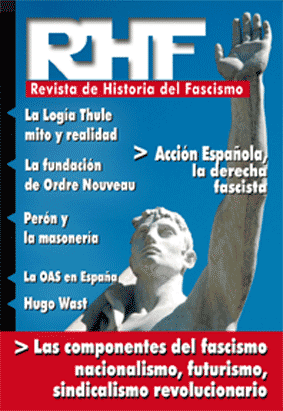




 del.icio.us
del.icio.us
 Digg
Digg
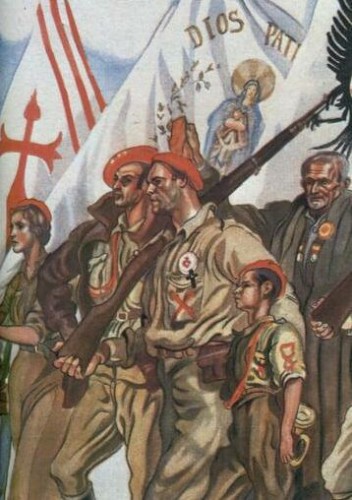 Er zijn echter 4 begrippen die doorheen de geschiedenis van het Carlisme steeds terugkeren en duidelijk op de voorgrond staan: Dios, Patria, Fueros, Rey.
Er zijn echter 4 begrippen die doorheen de geschiedenis van het Carlisme steeds terugkeren en duidelijk op de voorgrond staan: Dios, Patria, Fueros, Rey.
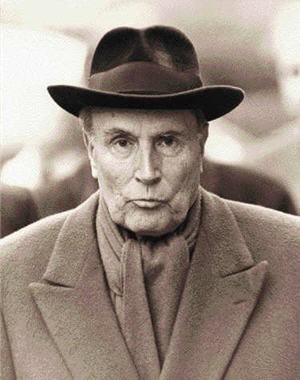
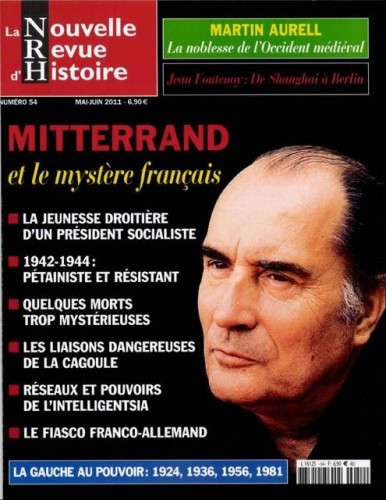
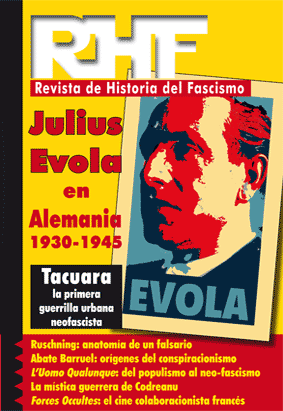

 As a historical (rather than a chronological) period, the twentieth century begins in 1914, with the onset of the First World War, whose devastating assault on European existence shook the continent in every one of its foundations, destroying not just its ancien régime, but ushering in what Ernst Nolte calls the “European Civil War” of 1917-45 or what some call the “Thirty Years War” of 1914-45. For amidst its storms of fire and steel, there emerged four rival ideologies — American liberalism, Russian Communism, Italian Fascism, and German National Socialism — each of whose ambition was to reshape the postwar order according to its own scheme for collective salvation. Our world, Venner argues, is a product of these contentious ambitions and of the ideological system — liberalism — that prevailed over its rivals.
As a historical (rather than a chronological) period, the twentieth century begins in 1914, with the onset of the First World War, whose devastating assault on European existence shook the continent in every one of its foundations, destroying not just its ancien régime, but ushering in what Ernst Nolte calls the “European Civil War” of 1917-45 or what some call the “Thirty Years War” of 1914-45. For amidst its storms of fire and steel, there emerged four rival ideologies — American liberalism, Russian Communism, Italian Fascism, and German National Socialism — each of whose ambition was to reshape the postwar order according to its own scheme for collective salvation. Our world, Venner argues, is a product of these contentious ambitions and of the ideological system — liberalism — that prevailed over its rivals.

 The clash between aristocratic and democratic values — between Europe and America — reflected, of course, a more profound clash. Venner explains it in terms of Oswald Spengler’s Prussianism and Socialism (1919), which argues that the sixteenth-century Reformation produced two opposed visions of Protestant Christianity — the Calvinism of the English and the Lutheran Pietism of the Germans. The German vision rejected the primacy of wealth, comfort, and happiness, exalting the soldier’s aristocratic spirit and the probity this spirit nurtured in Prussian officialdom. English Protestants, by contrast, privileged wealth (a sign of election) and the external freedoms necessary to its pursuit. This made it a secularizing, individualistic, and above all economic “religion,” with each individual having the right to interpret the Book in his own light and thus to justify whatever it took to succeed.
The clash between aristocratic and democratic values — between Europe and America — reflected, of course, a more profound clash. Venner explains it in terms of Oswald Spengler’s Prussianism and Socialism (1919), which argues that the sixteenth-century Reformation produced two opposed visions of Protestant Christianity — the Calvinism of the English and the Lutheran Pietism of the Germans. The German vision rejected the primacy of wealth, comfort, and happiness, exalting the soldier’s aristocratic spirit and the probity this spirit nurtured in Prussian officialdom. English Protestants, by contrast, privileged wealth (a sign of election) and the external freedoms necessary to its pursuit. This made it a secularizing, individualistic, and above all economic “religion,” with each individual having the right to interpret the Book in his own light and thus to justify whatever it took to succeed.


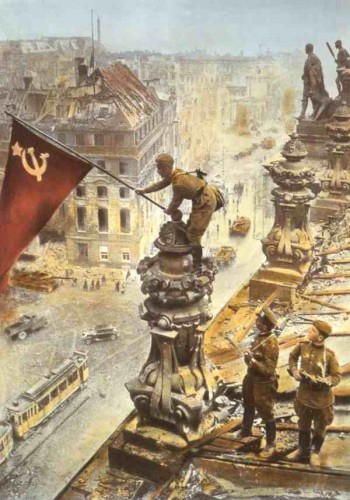
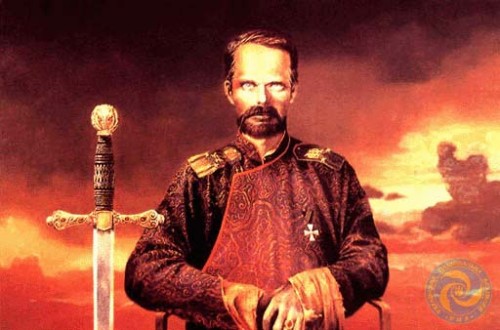


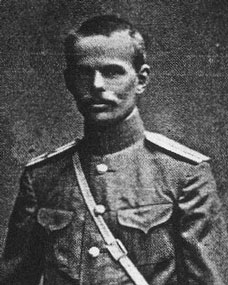
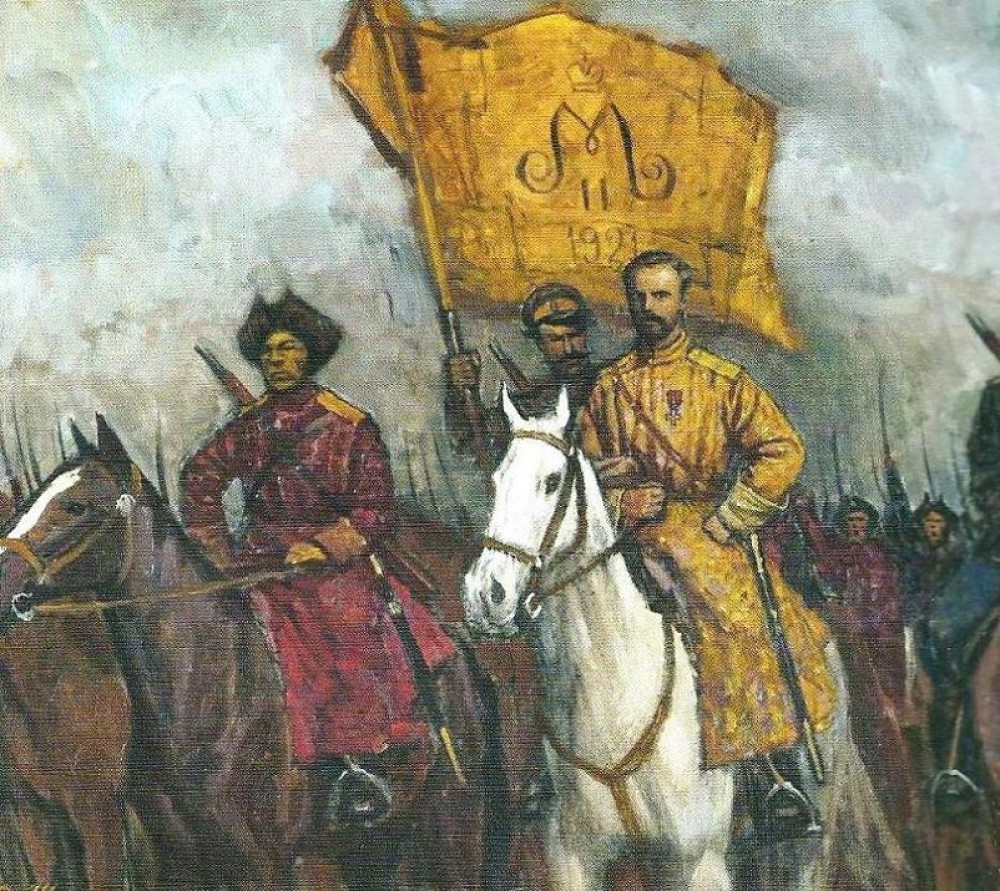
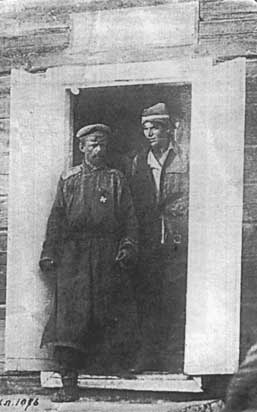
 Il y a maintenant plusieurs années de cela, un ancien officier du renseignement militaire soviétique nommé Vladimir Rezun provoqua de vives discussions en Russie à cause de son affirmation sensationnelle, selon laquelle Hitler a attaqué la Russie soviétique en juin 1941, au moment exact où Staline se préparait à submerger l’Allemagne et l’Europe de l’Ouest, en prélude à une opération bien préparée, visant à «libérer» toute l’Europe en la mettant sous domination communiste.
Il y a maintenant plusieurs années de cela, un ancien officier du renseignement militaire soviétique nommé Vladimir Rezun provoqua de vives discussions en Russie à cause de son affirmation sensationnelle, selon laquelle Hitler a attaqué la Russie soviétique en juin 1941, au moment exact où Staline se préparait à submerger l’Allemagne et l’Europe de l’Ouest, en prélude à une opération bien préparée, visant à «libérer» toute l’Europe en la mettant sous domination communiste.

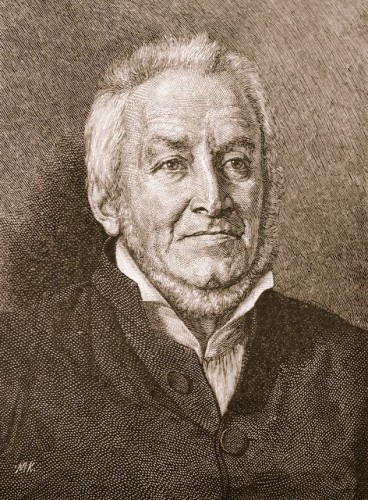
 Vi sono scelte che non vengono perdonate, che fruttano al proprio autore la «damnatio memoriae» perpetua, indipendentemente dal valore del personaggio e da tutto quanto egli possa aver detto o fatto di notevole, prima di compiere, magari per ragioni contingenti e sostanzialmente in buona fede, quella tale scelta infelice.
Vi sono scelte che non vengono perdonate, che fruttano al proprio autore la «damnatio memoriae» perpetua, indipendentemente dal valore del personaggio e da tutto quanto egli possa aver detto o fatto di notevole, prima di compiere, magari per ragioni contingenti e sostanzialmente in buona fede, quella tale scelta infelice.
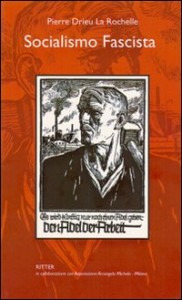
 Nella sua ricerca di un nuovo ordine europeo che consentisse alle «patrie» francese, tedesca, inglese, italiana, di continuare a svolgere un ruolo mondiale nell’era dei colossi imperiali, si era accostato anche a certi ambienti industriali e finanziari che egli definiva «capitalismo intelligente», perché aveva intuito che, in un mondo globalizzato, anche il capitalismo avrebbe potuto svolgere una funzione utile, purché si dissociasse dal nazionalismo e contribuisse a creare migliori condizioni di vita per gli abitanti del Vecchio Continente. Grande utopista, e forse sognatore, Drieu La Rochelle si rendeva però conto della importanza dei fattori materiali della vita moderna, e intendeva inserirli nel quadro della nuova Europa da costruire.
Nella sua ricerca di un nuovo ordine europeo che consentisse alle «patrie» francese, tedesca, inglese, italiana, di continuare a svolgere un ruolo mondiale nell’era dei colossi imperiali, si era accostato anche a certi ambienti industriali e finanziari che egli definiva «capitalismo intelligente», perché aveva intuito che, in un mondo globalizzato, anche il capitalismo avrebbe potuto svolgere una funzione utile, purché si dissociasse dal nazionalismo e contribuisse a creare migliori condizioni di vita per gli abitanti del Vecchio Continente. Grande utopista, e forse sognatore, Drieu La Rochelle si rendeva però conto della importanza dei fattori materiali della vita moderna, e intendeva inserirli nel quadro della nuova Europa da costruire.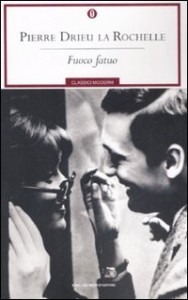



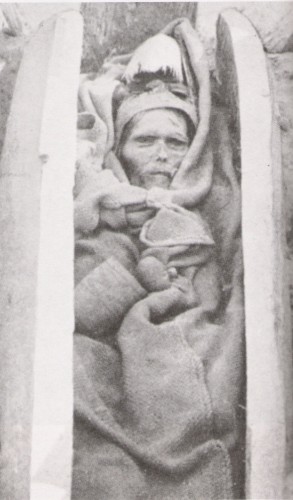 Eu estava, pois, apoiado no bar, bebericando um xarope de romã, quando vi avançar na minha direção um homenzinho calvo com alguns fios longos ao redor das orelhas; visivelmente ele tinha vontade de debater, pouco importando o assunto; nós bebemos e ele falou; ou o contrário; ele tinha um velho sobretudo negro, cujas manchas eram muito grandes, óculos que eram verdadeiros binóculos e se exprimia com um sotaque curioso, que enrolava os “r”, vindo talvez de qualquer parte do leste. Uma mistura de professor Girassol com Bergier. Ele me contou uma história engraçada sobre múmias que foram descobertas na China em um deserto, múmias de “gigantes loiros”, dizia. Ele desapareceu no momento em que eu pagava a conta; eu me perguntei se ele não era uma aparição, de um ou de outro dos personagens anteriormente citados; sim, eu sei que o professor Girassol não existe que sob o lápis de Hergé, mas sabe-se lá. Paul-Georges Sansonetti deve saber. Eu havia esquecido esta história até os dias de hoje, quando eu fiz algumas pesquisas. Somente para saber que o homenzinho não brincava.
Eu estava, pois, apoiado no bar, bebericando um xarope de romã, quando vi avançar na minha direção um homenzinho calvo com alguns fios longos ao redor das orelhas; visivelmente ele tinha vontade de debater, pouco importando o assunto; nós bebemos e ele falou; ou o contrário; ele tinha um velho sobretudo negro, cujas manchas eram muito grandes, óculos que eram verdadeiros binóculos e se exprimia com um sotaque curioso, que enrolava os “r”, vindo talvez de qualquer parte do leste. Uma mistura de professor Girassol com Bergier. Ele me contou uma história engraçada sobre múmias que foram descobertas na China em um deserto, múmias de “gigantes loiros”, dizia. Ele desapareceu no momento em que eu pagava a conta; eu me perguntei se ele não era uma aparição, de um ou de outro dos personagens anteriormente citados; sim, eu sei que o professor Girassol não existe que sob o lápis de Hergé, mas sabe-se lá. Paul-Georges Sansonetti deve saber. Eu havia esquecido esta história até os dias de hoje, quando eu fiz algumas pesquisas. Somente para saber que o homenzinho não brincava.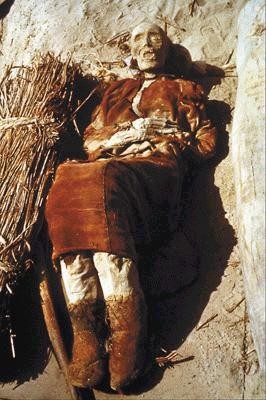 É o turcólogo alemão F.W. K. Muller quem deu, em 1907, o nome de tokariana a uma língua que nós podemos decifrar facilmente nos manuscritos, pois eles estavam anotados de maneira bilíngüe tokariano – sânscrito. Os lingüistas teriam em seguida estabelecido os vínculos entre esta língua e as línguas indo-européias, essencialmente o celta e o germânico. Nós reencontraremos alguma sonoridade similar nestes exemplos, respectivamente em português², francês, latim, irlandês e tokariano: mãe, mère, mater, mathir, macer. Irmão, frère, frater, brathir, prócer (próximo do inglês “brother”), três, trois, tres, tri, tre (segundo Giovanni Monastra).
É o turcólogo alemão F.W. K. Muller quem deu, em 1907, o nome de tokariana a uma língua que nós podemos decifrar facilmente nos manuscritos, pois eles estavam anotados de maneira bilíngüe tokariano – sânscrito. Os lingüistas teriam em seguida estabelecido os vínculos entre esta língua e as línguas indo-européias, essencialmente o celta e o germânico. Nós reencontraremos alguma sonoridade similar nestes exemplos, respectivamente em português², francês, latim, irlandês e tokariano: mãe, mère, mater, mathir, macer. Irmão, frère, frater, brathir, prócer (próximo do inglês “brother”), três, trois, tres, tri, tre (segundo Giovanni Monastra).  Cette année 2011 marque le 70e anniversaire de la naissance de l’État Indépendant Croate, un épisode majeur de l’histoire de la Croatie au XXe siècle mais aussi un événement qui soulève encore d’âpres controverses. Le 10 avril 1941 fut-il un accident de l’histoire, fut-il au contraire une étape logique et inéluctable de la vie nationale croate ou encore une simple péripétie orchestrée par Hitler et Mussolini pour servir leurs intérêts ? Extrêmement délicat eu égard aux méchantes polémiques que suscitent encore les faits et gestes des Croates durant la IIe Guerre mondiale, le débat n’est toujours pas clos et il n’est peut-être pas inutile de faire le point.
Cette année 2011 marque le 70e anniversaire de la naissance de l’État Indépendant Croate, un épisode majeur de l’histoire de la Croatie au XXe siècle mais aussi un événement qui soulève encore d’âpres controverses. Le 10 avril 1941 fut-il un accident de l’histoire, fut-il au contraire une étape logique et inéluctable de la vie nationale croate ou encore une simple péripétie orchestrée par Hitler et Mussolini pour servir leurs intérêts ? Extrêmement délicat eu égard aux méchantes polémiques que suscitent encore les faits et gestes des Croates durant la IIe Guerre mondiale, le débat n’est toujours pas clos et il n’est peut-être pas inutile de faire le point.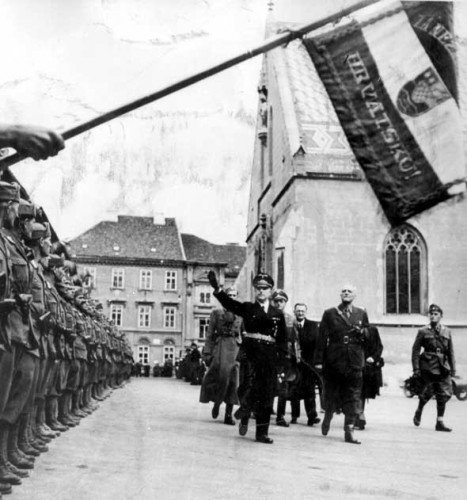
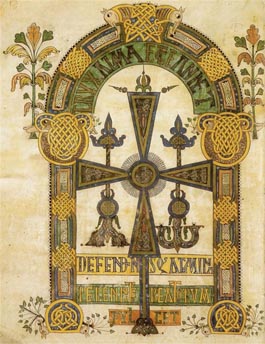

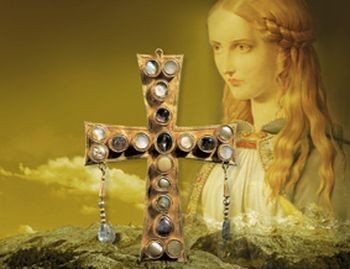
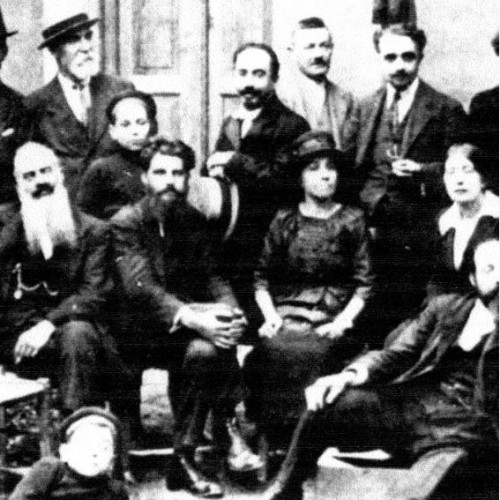
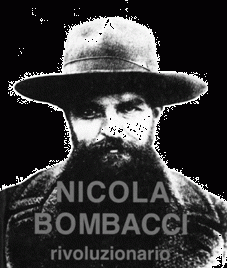 Comprovamos assim que Bombacci não é um fascista, mas defende as conquistas do regime e a figura de Mussolini. Não se aproximou do partido fascista – jamais se inscreveu no Partido Nacional Fascista – apesar da sua amizade reconhecida com Mussolini, não aceitou cargos que lhe poderiam oferecer nem renegou as suas origens comunistas. A sua independência valia mais. No entanto convenceu-se de que o Estado Corporativo proposto pelo fascismo era a realização mais perfeita, o socialismo levado à prática, um estado superior ao comunismo. Jamais camuflará os seus ideais, em 1936 escrevia na revista “La Veritá”, confessando a sua adesão ao fascismo mas também ao comunismo:
Comprovamos assim que Bombacci não é um fascista, mas defende as conquistas do regime e a figura de Mussolini. Não se aproximou do partido fascista – jamais se inscreveu no Partido Nacional Fascista – apesar da sua amizade reconhecida com Mussolini, não aceitou cargos que lhe poderiam oferecer nem renegou as suas origens comunistas. A sua independência valia mais. No entanto convenceu-se de que o Estado Corporativo proposto pelo fascismo era a realização mais perfeita, o socialismo levado à prática, um estado superior ao comunismo. Jamais camuflará os seus ideais, em 1936 escrevia na revista “La Veritá”, confessando a sua adesão ao fascismo mas também ao comunismo: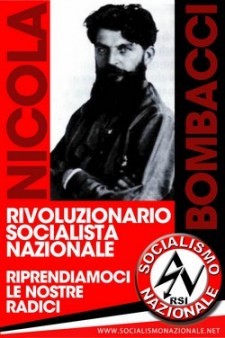 Quando Mussolini é deposto em Julho de 1943 e resgatado pelos alemães uns meses depois, o Partido Nacional Fascista já se desagregou. A estrutura orgânica desapareceu, os dirigentes do partido, provenientes das camadas privilegiadas da sociedade passaram-se em massa para o governo de Badoglio e a Itália encontra-se dividida em dois (ao sul de Roma os Aliados avançam em direcção ao norte). Mussolini reagrupa os seus mais fiéis, todos eles velhos camaradas da primeira hora ou jovens entusiastas, quase nenhum dirigente de alto nível, que ainda acreditam na revolução fascista e proclama a República Social Italiana. Imediatamente o fascismo parece voltar às suas origens revolucionárias e Nicola Bombacci adere à república proclamada e presta a Mussolini todo o seu apoio. O seu sonho é poder levar a cabo a construção dessa “República dos trabalhadores” pela qual tanto ele como Mussolini se bateram juntos no início do século. Tal como Bombacci, outros conhecidos intelectuais de esquerda juntam-se ao novo governo: Carlo Silvestri (deputado socialista, depois da guerra defensor da memória do Duce), Edmondo Cione (filosofo socialista que será autorizado a criar um partido socialista aparte do Partido Fascista Republicano), etc.
Quando Mussolini é deposto em Julho de 1943 e resgatado pelos alemães uns meses depois, o Partido Nacional Fascista já se desagregou. A estrutura orgânica desapareceu, os dirigentes do partido, provenientes das camadas privilegiadas da sociedade passaram-se em massa para o governo de Badoglio e a Itália encontra-se dividida em dois (ao sul de Roma os Aliados avançam em direcção ao norte). Mussolini reagrupa os seus mais fiéis, todos eles velhos camaradas da primeira hora ou jovens entusiastas, quase nenhum dirigente de alto nível, que ainda acreditam na revolução fascista e proclama a República Social Italiana. Imediatamente o fascismo parece voltar às suas origens revolucionárias e Nicola Bombacci adere à república proclamada e presta a Mussolini todo o seu apoio. O seu sonho é poder levar a cabo a construção dessa “República dos trabalhadores” pela qual tanto ele como Mussolini se bateram juntos no início do século. Tal como Bombacci, outros conhecidos intelectuais de esquerda juntam-se ao novo governo: Carlo Silvestri (deputado socialista, depois da guerra defensor da memória do Duce), Edmondo Cione (filosofo socialista que será autorizado a criar um partido socialista aparte do Partido Fascista Republicano), etc. Nel diciassettessimo secolo gli Stati costieri del Maghreb – Marocco, Algeri, Tunisi, Tripoli -, nominalmente infeudati all’Impero Ottomano, erano in piena fioritura economica e politica. Una parte notevolissima del loro benessere proveniva dalla pirateria, esercitata in maniera diretta o indiretta, cioè esigendo il pagamento di un tributo dagli Stati cristiani che volevano vivere tranquilli. Altro denaro affluiva nelle casse dei pascià maghrebini sotto forma di riscatto per gli schiavi cristiani che i parenti volevano far liberare; anche il grande scrittore Miguel de Cervantes conobbe questa dolorosa vicissitudine, dal 1575 al 1580. (1) Si calcola che nella prima metà del 1600 vi fossero, nella sola Algeria, più di 20.000 schiavi cristiani. (2) L’intera struttura economico-sociale di Tunisi e di Algeri, che in quell’epoca avevano riunito le loro forze, poggiava sulla guerra di corsa.
Nel diciassettessimo secolo gli Stati costieri del Maghreb – Marocco, Algeri, Tunisi, Tripoli -, nominalmente infeudati all’Impero Ottomano, erano in piena fioritura economica e politica. Una parte notevolissima del loro benessere proveniva dalla pirateria, esercitata in maniera diretta o indiretta, cioè esigendo il pagamento di un tributo dagli Stati cristiani che volevano vivere tranquilli. Altro denaro affluiva nelle casse dei pascià maghrebini sotto forma di riscatto per gli schiavi cristiani che i parenti volevano far liberare; anche il grande scrittore Miguel de Cervantes conobbe questa dolorosa vicissitudine, dal 1575 al 1580. (1) Si calcola che nella prima metà del 1600 vi fossero, nella sola Algeria, più di 20.000 schiavi cristiani. (2) L’intera struttura economico-sociale di Tunisi e di Algeri, che in quell’epoca avevano riunito le loro forze, poggiava sulla guerra di corsa. C’erano, è pur vero, alcuni elementi che giocavano a vantaggio della flotta barbaresca. In primo luogo, i Turchi – e quindi i loro alleati nordafricani – disponevano di ottime carte nautiche relative a tutti i mari del mondo, delle quali la famosa carta di Piri Reis, conservata nel Museo Topkapi di Istanbul, è solo un esempio. Poi, a partire dal 45° parallelo Nord circa, la flotta moresca nel viaggio di andata (ma solo in quello di andata!) avrebbe potuto sfruttare in pieno il ramo principale della Corrente del Golfo, che l’avrebbe sospinta di poppa dritta dritta fino all’Islanda (7). Gli icebergs, però, nell’ultima fase del viaggio, avrebbero costituito un pericolo temibile, specialmente di notte. (E si badi che lo sarebbero stati, praticamente, fino all’introduzione del radar, come dimostrerà l’immane tragedia del grandioso transatlantico Titanic in piena belle époque: nel 1912!). Senza contare che le caratteristiche tecniche del naviglio moresco – la leggerezza e l’esilità dello scafo e delle strutture di coperta – se costituivano un vantaggio nel Mediterraneo, poiché consentivano di sviluppare una velocità superiore a quella dei grossi vascelli europei, ponevano tuttavia un’incognita nelle violente tempeste dell’Atlantico settentrionale.
C’erano, è pur vero, alcuni elementi che giocavano a vantaggio della flotta barbaresca. In primo luogo, i Turchi – e quindi i loro alleati nordafricani – disponevano di ottime carte nautiche relative a tutti i mari del mondo, delle quali la famosa carta di Piri Reis, conservata nel Museo Topkapi di Istanbul, è solo un esempio. Poi, a partire dal 45° parallelo Nord circa, la flotta moresca nel viaggio di andata (ma solo in quello di andata!) avrebbe potuto sfruttare in pieno il ramo principale della Corrente del Golfo, che l’avrebbe sospinta di poppa dritta dritta fino all’Islanda (7). Gli icebergs, però, nell’ultima fase del viaggio, avrebbero costituito un pericolo temibile, specialmente di notte. (E si badi che lo sarebbero stati, praticamente, fino all’introduzione del radar, come dimostrerà l’immane tragedia del grandioso transatlantico Titanic in piena belle époque: nel 1912!). Senza contare che le caratteristiche tecniche del naviglio moresco – la leggerezza e l’esilità dello scafo e delle strutture di coperta – se costituivano un vantaggio nel Mediterraneo, poiché consentivano di sviluppare una velocità superiore a quella dei grossi vascelli europei, ponevano tuttavia un’incognita nelle violente tempeste dell’Atlantico settentrionale.
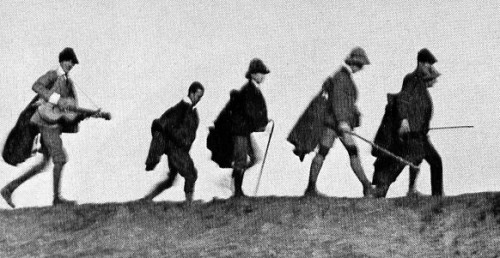
 On projette donc le très beau film "Katyn" ce 14 avril (1) sur la chaîne franco-allemande Arte. Au-delà de l'œuvre de Wajda elle-même (2), de son scénario, tiré d'un roman mais aussi de l'expérience personnelle du cinéaste dans la Pologne communiste d'après-guerre, il faut considérer l'Histoire. Celle-ci accable non seulement Staline personnellement mais, d'une manière plus générale, le communisme international. Au premier rang en occident le parti le plus servile, le parti français, le parti de Maurice Thorez et de Jacques Duclos partage 100 % de la culpabilité de son maître. Et il faut y ajouter une circonstance aggravante. Car, après la Pologne en 1939, abandonnée par les radicaux-socialistes en charge à Paris de la conduite de la guerre, le sort de la France suivit en 1940.
On projette donc le très beau film "Katyn" ce 14 avril (1) sur la chaîne franco-allemande Arte. Au-delà de l'œuvre de Wajda elle-même (2), de son scénario, tiré d'un roman mais aussi de l'expérience personnelle du cinéaste dans la Pologne communiste d'après-guerre, il faut considérer l'Histoire. Celle-ci accable non seulement Staline personnellement mais, d'une manière plus générale, le communisme international. Au premier rang en occident le parti le plus servile, le parti français, le parti de Maurice Thorez et de Jacques Duclos partage 100 % de la culpabilité de son maître. Et il faut y ajouter une circonstance aggravante. Car, après la Pologne en 1939, abandonnée par les radicaux-socialistes en charge à Paris de la conduite de la guerre, le sort de la France suivit en 1940.